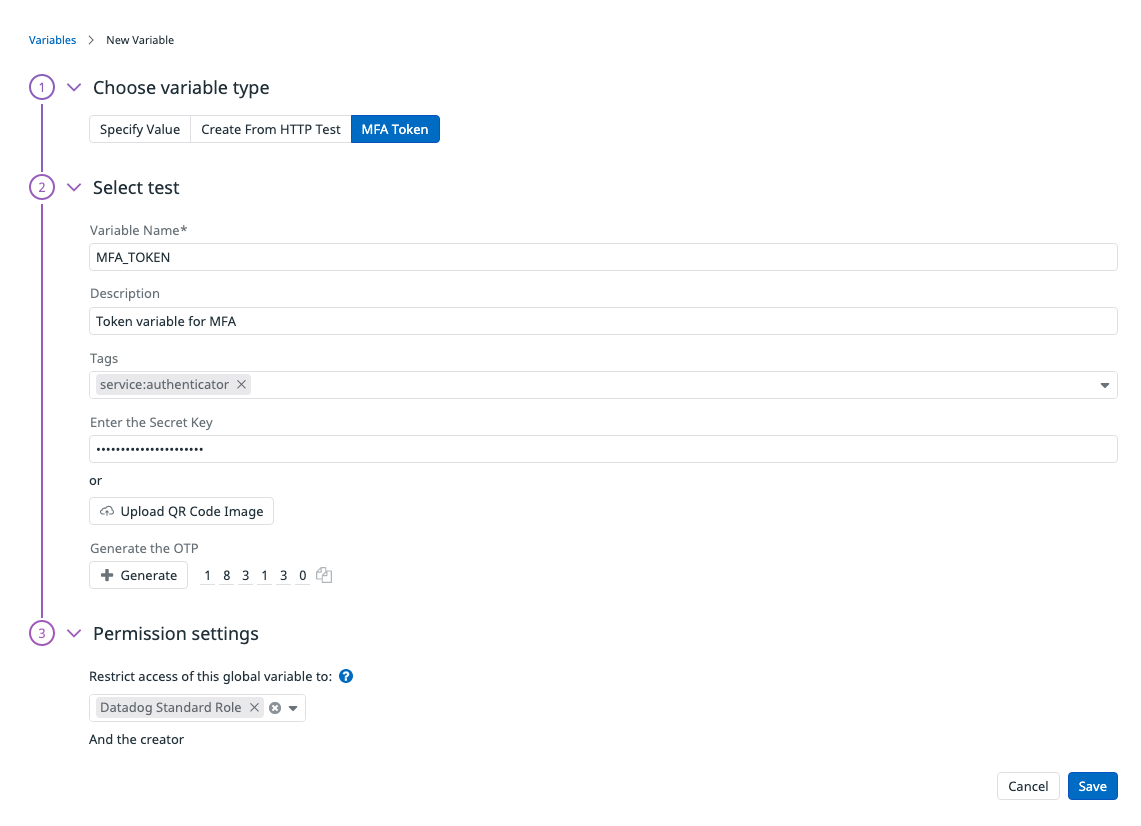- Essentials
- Getting Started
- Agent
- API
- APM Tracing
- Containers
- Dashboards
- Database Monitoring
- Datadog
- Datadog Site
- DevSecOps
- Incident Management
- Integrations
- Internal Developer Portal
- Logs
- Monitors
- Notebooks
- OpenTelemetry
- Profiler
- Search
- Session Replay
- Security
- Serverless for AWS Lambda
- Software Delivery
- Synthetic Monitoring and Testing
- Tags
- Workflow Automation
- Learning Center
- Support
- Glossary
- Standard Attributes
- Guides
- Agent
- Integrations
- Developers
- Authorization
- DogStatsD
- Custom Checks
- Integrations
- Build an Integration with Datadog
- Create an Agent-based Integration
- Create an API-based Integration
- Create a Log Pipeline
- Integration Assets Reference
- Build a Marketplace Offering
- Create an Integration Dashboard
- Create a Monitor Template
- Create a Cloud SIEM Detection Rule
- Install Agent Integration Developer Tool
- Service Checks
- IDE Plugins
- Community
- Guides
- OpenTelemetry
- Administrator's Guide
- API
- Partners
- Datadog Mobile App
- DDSQL Reference
- CoScreen
- CoTerm
- Remote Configuration
- Cloudcraft (Standalone)
- In The App
- Dashboards
- Notebooks
- DDSQL Editor
- Reference Tables
- Sheets
- Monitors and Alerting
- Watchdog
- Metrics
- Bits AI
- Internal Developer Portal
- Error Tracking
- Change Tracking
- Service Management
- Service Level Objectives
- Incident Management
- On-Call
- Status Pages
- Event Management
- Case Management
- Actions & Remediations
- Infrastructure
- Cloudcraft
- Resource Catalog
- Universal Service Monitoring
- End User Device Monitoring
- Hosts
- Containers
- Processes
- Serverless
- Network Monitoring
- Storage Management
- Cloud Cost
- Application Performance
- APM
- APM Terms and Concepts
- Application Instrumentation
- APM Metrics Collection
- Trace Pipeline Configuration
- Correlate Traces with Other Telemetry
- Trace Explorer
- Recommendations
- Code Origin for Spans
- Service Observability
- Endpoint Observability
- Dynamic Instrumentation
- Live Debugger
- Error Tracking
- Data Security
- Guides
- Troubleshooting
- Continuous Profiler
- Database Monitoring
- Agent Integration Overhead
- Setup Architectures
- Setting Up Postgres
- Setting Up MySQL
- Setting Up SQL Server
- Setting Up Oracle
- Setting Up Amazon DocumentDB
- Setting Up MongoDB
- Connecting DBM and Traces
- Data Collected
- Exploring Database Hosts
- Exploring Query Metrics
- Exploring Query Samples
- Exploring Database Schemas
- Exploring Recommendations
- Troubleshooting
- Guides
- Data Streams Monitoring
- Data Jobs Monitoring
- Data Observability
- Digital Experience
- Real User Monitoring
- Synthetic Testing and Monitoring
- Continuous Testing
- Product Analytics
- Software Delivery
- CI Visibility
- CD Visibility
- Deployment Gates
- Test Optimization
- Code Coverage
- PR Gates
- DORA Metrics
- Feature Flags
- Security
- Security Overview
- Cloud SIEM
- Code Security
- Cloud Security
- App and API Protection
- Workload Protection
- Sensitive Data Scanner
- AI Observability
- Log Management
- Administration
Use Time-based One-time Passwords (TOTPs) For Multi-Factor Authentication (MFA) In Browser Tests
Overview
Multi-factor authentication methods such as TFA and MFA help protect your applications against unauthorized access, however, these methods can make testing features more difficult.
Datadog Synthetic MFA global variables allow you to test your application’s TOTP-based MFA modules and critical user journeys without disabling critical security measures or manually entering authentication codes with disparate tools. You do not need to create or maintain dedicated environments to test MFA-enabled user journeys.
Note: If your TOTP token works in Google Authenticator, it is likely compatible with Datadog. Some QR codes are limited to specific verification methods and may not work across platforms. To ensure compatibility, use a QR code or secret that follows standard TOTP protocols.
Store your secret key or QR code in a global variable
Create a global variable where you enter a secret key or upload a QR code from your authentication provider. In the Global Variables tab of your Settings page, click Create Global Variable.
- In Choose variable type, select MFA Token.
- In Define variable, enter a Variable Name. Your variable name can only use uppercase letters, numbers, and underscores.
- Enter a Description for your variable (optional).
- Select Tags to associate with your variable (optional).
- Follow your authenticator app’s documentation for instructions on creating a secret key or adding a new QR code.
- Enter the Secret Key to your variable or upload a QR code image.
- Click + Generate to create a TOTP. You can copy the generated TOTP with the Copy icon.
- In Permissions settings, restrict access to your variable based on roles in your org. For more information about roles, see the RBAC documentation.
Use TOTP in your Synthetic tests
You can use the secret key or QR code stored in a global variable across all your Synthetic tests. When creating a browser test, inject the TOTP generated from the secret key or QR code stored in the global variable to verify your application’s authentication workflow.
To use TOTP in your browser tests:
- Import your global variable.
- When recording your test, click the Hand icon to generate a TOTP.
- In your test browser application, click in a field to paste the TOTP. Injecting the computed code into your test creates another test step.
- After recording your test steps, click Save & Launch Test.

